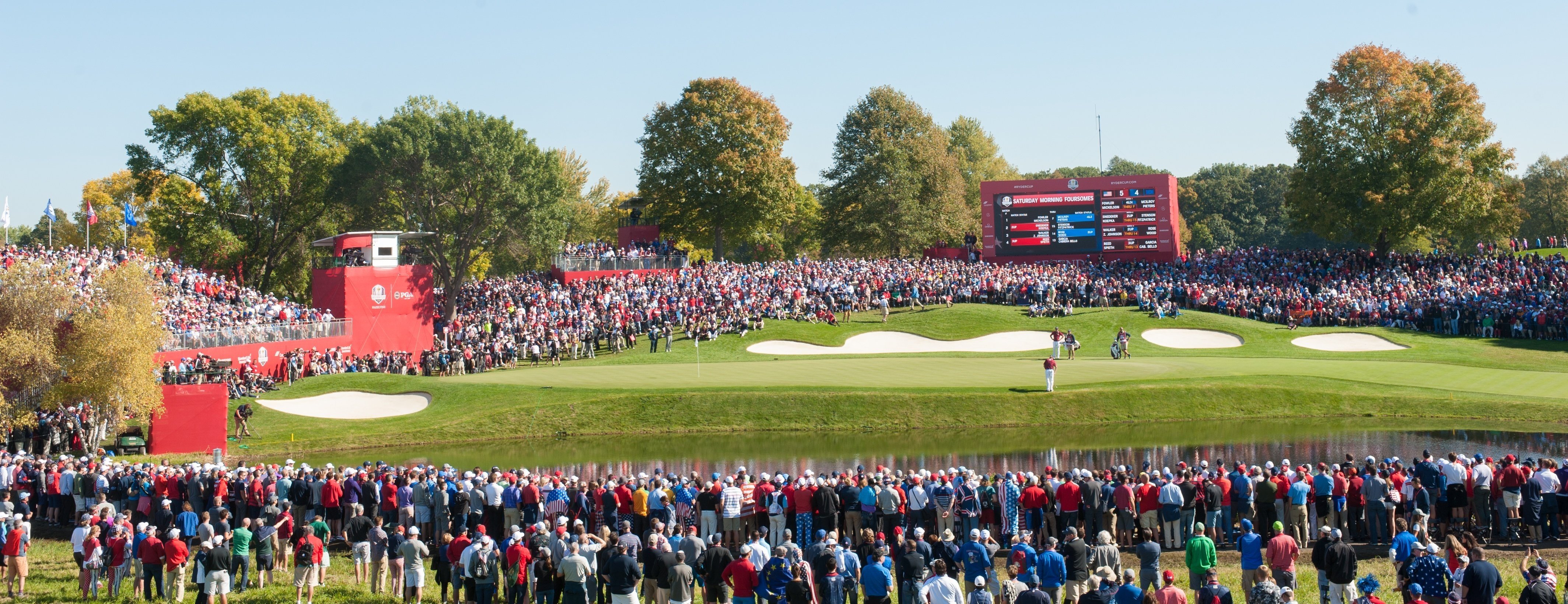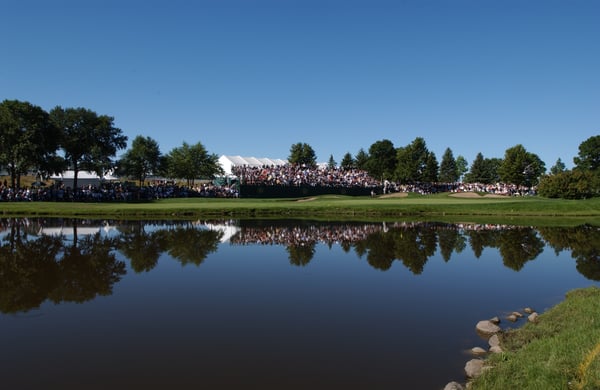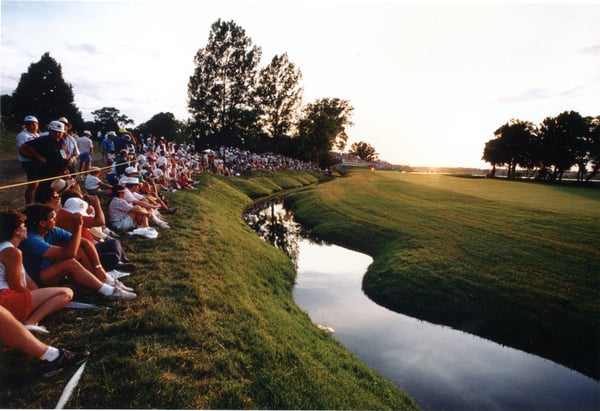Dan Mulheran Named General Chair for 2029 Ryder Cup at Hazeltine National Golf Club
CHASKA, Minnesota (August 26, 2025) ー The PGA of America and Hazeltine National Golf Club announced that Dan Mulheran...
November 09, 2018

 |
| 2016 Ryder Cup, Hole 16 | Par 5 – 572 yards |
While the design and routing of some holes at Hazeltine National have changed since its opening in 1962, the tone from the original course architect, Robert Trent Jones, Sr., has remained the same.
The reputation of the Jones family was one of making the player earn a “difficult par.” Making a par on some of the toughest holes at Hazeltine has remained a challenge over the last 56 years, especially for those in contention.
The last thing a player wants to see while contending in a major championship are hazards, such as water and out of bounds, along with a difficult closing stretch when they are protecting a lead. Hazeltine National challenges players in both regards.
The holes that have given players the most difficulty over the years have been the 8th hole and the closing stretch of 16 through 18.
The par three 8th hole features a narrow sliver of green perched above a water hazard in front of three bunkers.
 |
| 2002 PGA Championship, Hole 8 | Par 3 – 178 yards |
Coming up short will most often cost the players two shots as the lateral hazard option is removed for championships and the player is forced to drop behind the hazard, playing a third shot from roughly 100 yards. Going long results a tough bunker shot or a pitch shot from long rough towards the water.
In 2002, Justin Leonard was tied for the lead in the final round but came up short on his approach, leading to a triple bogey 6. In 2009, Padraig Harrington came to the 8th also tied for the lead on Sunday. Although Harrington’s tee shot was dry, his next two pitch shots were not, leading to an 8 and the end of his chances of winning.
The reason holes 11 – 13 at Augusta National are coined “Amen Corner” is because players have been known to say the word amen after finishing the stretch in even par. With water on every hole, disaster is waiting to happen.
At Hazeltine, playing holes 16 – 18 at even par will give any player the same feeling of gratitude.
 |
| 1991 U.S. Open Championship, Hole 16 | Par 4 – 396 yards |
The tee shot on the par four 16th hole forces the player to play aggressively towards the creek down the left side of the fairway to get the best angle on the approach shot. Playing passively to the right can also result in a player getting wet or blocked out on their approach by clusters of trees. The 16th played as the hardest hole during the 2002 PGA Championship.
The par three 17th hole features a lateral hazard to the left and a two-tiered green with deep rough and bunkers long. It was at the 17th that Scott Simpson’s chances of winning his second U.S. Open came to an end when he found the water during the playoff against Payne Stewart in 1991. The 17th played as the 5th hardest hole in the 2009 PGA Championship.
 |
| 2002 PGA Championship, Hole 17 | Par 3 – 182 yards |
Finishing with a par on the uphill 475 yard closing hole is no easy task, given the hole’s 4th hardest ranking in both the 2002 and 2009 PGA Championships.
The finishing stretch, combined with holes like the 8th, give the audience a feeling the leader’s work isn’t done until they have holed out on the 72nd hole at Hazeltine National. We look forward to seeing how the leaders handle these holes during the upcoming 2019 KPMG Women’s PGA Championship and 2020 U.S. Junior Amateur.
 |
| Chandler Withington |
| Head Golf Professional |
Aug 26, 2025
CHASKA, Minnesota (August 26, 2025) ー The PGA of America and Hazeltine National Golf Club announced that Dan Mulheran...
Jul 12, 2025
Davis Love III stepped onto the first tee at Aerie, surrounded by Hazeltine members ready to experience a more...
Nov 20, 2024
CHASKA, MINN (November 20, 2024). Totton P. Heffelfinger founded Hazeltine National Golf Club in 1962 to provide a pure...